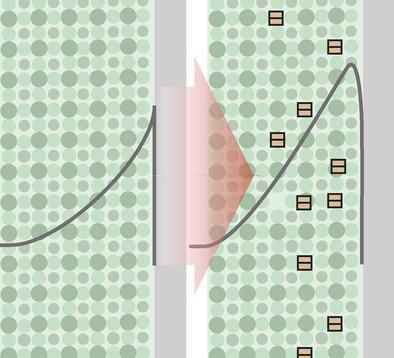当前位置:
X-MOL 学术
›
Adv. Electron. Mater.
›
论文详情
Our official English website, www.x-mol.net, welcomes your feedback! (Note: you will need to create a separate account there.)
Effect of Cationic Interface Defects on Band Alignment and Contact Resistance in Metal/Oxide Heterojunctions
Advanced Electronic Materials ( IF 6.2 ) Pub Date : 2019-11-18 , DOI: 10.1002/aelm.201900808 Michael Andrä 1 , Carsten Funck 2 , Nicolas Raab 1 , Marc‐André Rose 2 , Mykhailo Vorokhta 3 , Filip Dvorˇák 3 , Brˇetislav Šmíd 3 , Vladimír Matolín 3 , David N. Mueller 4 , Regina Dittmann 1 , Rainer Waser 1, 2 , Stephan Menzel 1 , Felix Gunkel 1, 2
Advanced Electronic Materials ( IF 6.2 ) Pub Date : 2019-11-18 , DOI: 10.1002/aelm.201900808 Michael Andrä 1 , Carsten Funck 2 , Nicolas Raab 1 , Marc‐André Rose 2 , Mykhailo Vorokhta 3 , Filip Dvorˇák 3 , Brˇetislav Šmíd 3 , Vladimír Matolín 3 , David N. Mueller 4 , Regina Dittmann 1 , Rainer Waser 1, 2 , Stephan Menzel 1 , Felix Gunkel 1, 2
Affiliation

|
Heterojunctions between high‐work‐function metals and metal oxides typically lead to Schottky‐type transport barriers resulting from charge transfer between the neighboring materials. These yield versatile electronic functionality exploited for current rectification, memristive behavior, or photocatalysis. Height, width, and shape of the interfacial transport barrier are strongly affected by charge screening via ionic defects, which are often extremely difficult to probe. The ionic nature of a variable contact resistance in heterojunctions between Nb‐doped SrTiO3 (Nb:SrTiO3) and platinum is explored. A control of cationic vacancy defects at the interface is achieved by different annealing procedures in oxidizing and reducing conditions before establishing Pt/Nb:SrTiO3 heterojunctions. Detailed analysis of electronic transport across the heterojunctions reveal significantly varied transport barriers resulting from the cationic defect structure at the interface. These findings are supported by conductive‐tip atomic force microscopy and in situ photoemission spectroscopy showing diminished conductivity of the Nb:SrTiO3 surface and the formation of an insulating surface skin layer after oxygenation. At high doping level, oxygen stoichiometry cannot explain the observed behavior. The increased transport barrier height is therefore linked to strontium vacancy defects. The tailored cation disorder yields access to the ionic control of electronic transport in functional oxide heterojunctions.
中文翻译:

阳离子界面缺陷对金属/氧化物异质结中能带排列和接触电阻的影响
高功函数金属和金属氧化物之间的异质结通常会由于相邻材料之间的电荷转移而导致肖特基型传输势垒。这些产生了用于电流整流,忆阻行为或光催化的通用电子功能。界面传输屏障的高度,宽度和形状会受到离子缺陷的电荷筛选的强烈影响,而离子缺陷通常很难探测到。探索了掺杂Nb的SrTiO 3(Nb:SrTiO 3)与铂之间的异质结中可变接触电阻的离子性质。在建立Pt / Nb:SrTiO 3之前,通过在氧化和还原条件下进行不同的退火程序,可以控制界面处的阳离子空位缺陷。异质结。跨异质结的电子传输的详细分析显示,由于界面处的阳离子缺陷结构而导致的传输势垒显着不同。这些发现得到了导电尖端原子力显微镜和原位光发射光谱的支持,这些光谱显示了Nb:SrTiO 3表面的电导率降低以及氧合后形成的绝缘表皮层。在高掺杂水平下,氧化学计量不能解释观察到的行为。因此,增加的运输阻挡层高度与锶空位缺陷有关。定制的阳离子无序可利用功能性氧化物异质结中电子传输的离子控制。
更新日期:2020-01-13
中文翻译:

阳离子界面缺陷对金属/氧化物异质结中能带排列和接触电阻的影响
高功函数金属和金属氧化物之间的异质结通常会由于相邻材料之间的电荷转移而导致肖特基型传输势垒。这些产生了用于电流整流,忆阻行为或光催化的通用电子功能。界面传输屏障的高度,宽度和形状会受到离子缺陷的电荷筛选的强烈影响,而离子缺陷通常很难探测到。探索了掺杂Nb的SrTiO 3(Nb:SrTiO 3)与铂之间的异质结中可变接触电阻的离子性质。在建立Pt / Nb:SrTiO 3之前,通过在氧化和还原条件下进行不同的退火程序,可以控制界面处的阳离子空位缺陷。异质结。跨异质结的电子传输的详细分析显示,由于界面处的阳离子缺陷结构而导致的传输势垒显着不同。这些发现得到了导电尖端原子力显微镜和原位光发射光谱的支持,这些光谱显示了Nb:SrTiO 3表面的电导率降低以及氧合后形成的绝缘表皮层。在高掺杂水平下,氧化学计量不能解释观察到的行为。因此,增加的运输阻挡层高度与锶空位缺陷有关。定制的阳离子无序可利用功能性氧化物异质结中电子传输的离子控制。



























 京公网安备 11010802027423号
京公网安备 11010802027423号